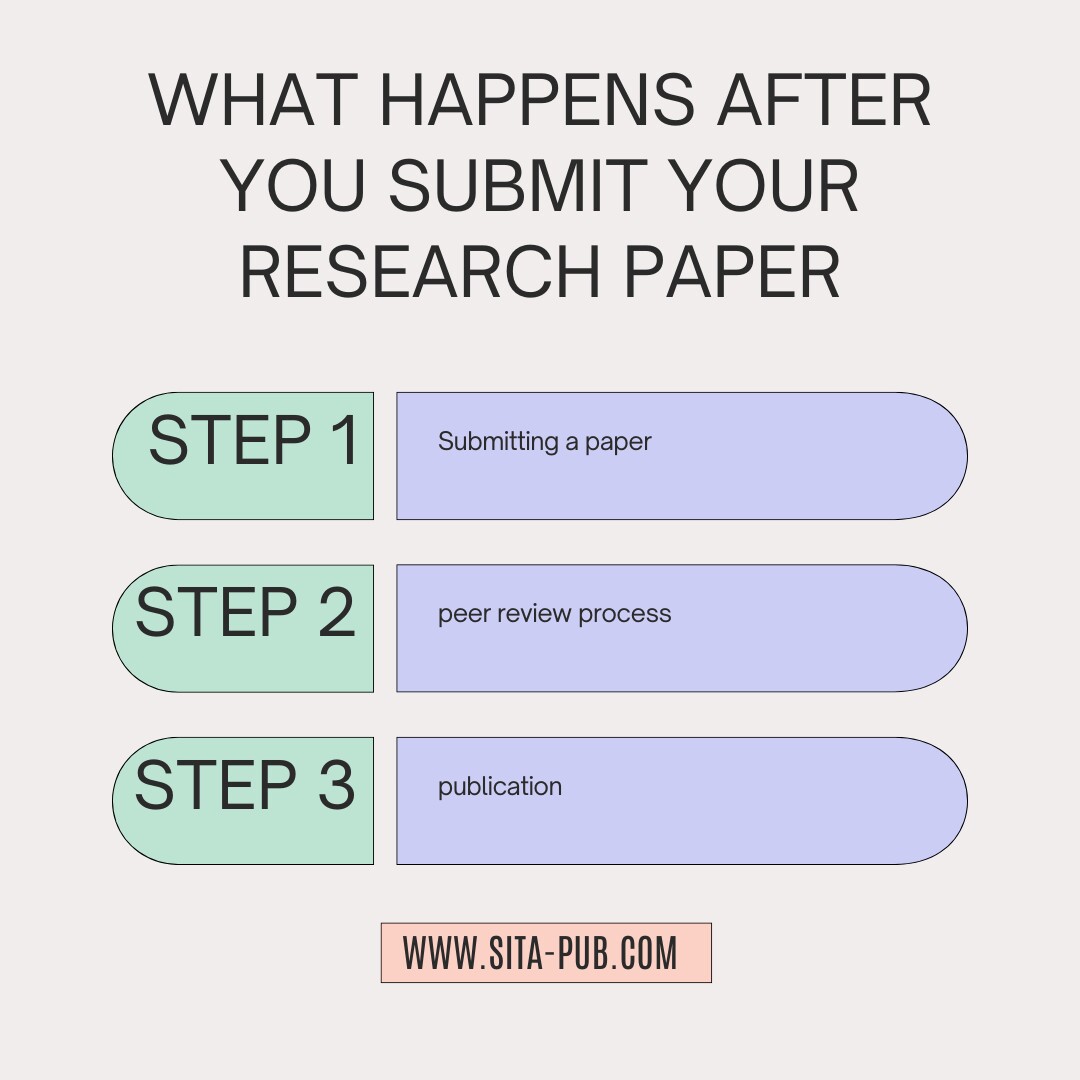What Happens After You Submit Your Research Paper | Publication Journey


Submitting your research paper is a moment of triumph, a culmination of countless hours of research, analysis, and writing. But it's not the final destination. It's merely the starting point for a new journey, one that navigates the intricate world of academic publishing. Understanding the steps involved after you hit "submit" can help you navigate this process with greater confidence and clarity.
After your paper is submitted, it enters the realm of peer review, a crucial process designed to ensure the quality and originality of published research. This process acts as a gatekeeper, ensuring that only the most rigorous and impactful research finds its way into the academic literature.
Here's a breakdown of the key steps:
The editor of the journal, who acts as the gatekeeper for the publication, takes a first look at your paper. They assess whether it aligns with the journal's scope and meets basic quality standards. Papers that are clearly out of scope or poorly written may be rejected at this stage. This initial screening ensures that only papers with a strong chance of success move forward in the process.
If your paper passes the initial screening, it's sent to two or more experts in your field for peer review. These reviewers are typically researchers with extensive knowledge and experience in the subject matter of your paper. They are tasked with providing a critical evaluation of your research, ensuring its rigor and originality.
The reviewers carefully examine your paper, assessing its originality, methodology, data analysis, and conclusions. They provide detailed feedback, highlighting strengths, weaknesses, and areas for improvement. This feedback is invaluable for authors, as it offers a fresh perspective and guidance on how to refine their work.
The editor of the journal reviews the reviewer's feedback and makes a decision based on the reviewers' recommendations. This decision can be:
Your paper is accepted for publication without any revisions. This is the ideal outcome, but it's relatively uncommon.
Your paper is accepted for publication, but the editor wants you to make some changes based on the reviewer's feedback. This is a common scenario, as it allows authors to improve their work based on expert recommendations.
Your paper is not accepted for publication. This might be because it's not new enough, or because there are problems with the research methods, or because it's not clear enough. Rejection can be disheartening, but it's important to remember that it's not necessarily a reflection of the quality of your research. It might simply mean that your paper is not the right fit for that particular journal or that it needs further refinement.
Rejection can be a difficult experience, but it's important to remember that it's part of the process. It's not a personal attack, but rather a reflection of the rigorous standards of academic publishing. If your paper is rejected, don't give up. Read the reviewers' feedback carefully. Is it constructive and helpful? Can you address the concerns raised? If so, you may be able to revise your paper and submit it to a different journal.
Acceptance of revisions is a positive sign, indicating that the reviewers see potential in your work. Take the time to carefully address the reviewer's feedback. Be respectful and professional in your responses, demonstrating your willingness to improve your work. This shows the editor that you value their feedback and are committed to making your research the best it can be.

Once your paper is accepted for publication, it will undergo final editing to ensure consistency with the journal's style. The editor may also make minor changes to improve clarity and flow. This final stage ensures that your paper meets the highest standards of academic publishing and is presented in a way that is accessible and engaging for readers.
The publication process can take several weeks or even months, depending on the journal's workload and production schedule. Once your paper is published, it will be accessible to a wider audience of researchers and scholars, contributing to the advancement of knowledge in your field.

Ready to share your groundbreaking research with the world? SITA Academy offers comprehensive publication support services to guide you through every step of the journey, from choosing the right journal to navigating the peer review process and beyond. We provide expert guidance on:
Journal Recommendations: Finding the perfect fit for your research, ensuring maximum impact. We help you identify suitable journals, including reputable journals in your field, peer-reviewed journals, open-access journals, and those indexed in Scopus and Social Science Citation Index. We also consider your target audience and the impact factor of potential journals.
Manuscript Formatting: Ensuring your paper meets the highest standards for clarity and style. We help you adhere to specific journal guidelines, ensuring your manuscript is ready for submission.
Submission Strategies: Crafting compelling cover letters and navigating the submission process with confidence. We provide guidance on effectively communicating the significance of your research to journal editors, increasing your chances of acceptance.
Peer Review Support: Providing guidance on understanding and responding to reviewer feedback, strengthening your manuscript. We help you address reviewer concerns effectively, ensuring your paper meets the highest standards of academic rigor.
Post-Publication Promotion: Helping you maximize the reach and impact of your published work. We provide strategies for promoting your research, ensuring it reaches the right audience and contributes to the advancement of knowledge.

Let SITA Academy help you turn your research into impactful publications that advance your career and contribute to the advancement of knowledge.
Why Choose SITA Academy?

Team of human professionals

Quality Assurance

Timely delivery

Satisfaction guarantee
If you have any questions, inquiries, or would like to learn more about our services, please don't hesitate to reach out to us. Our dedicated team is ready to assist you.